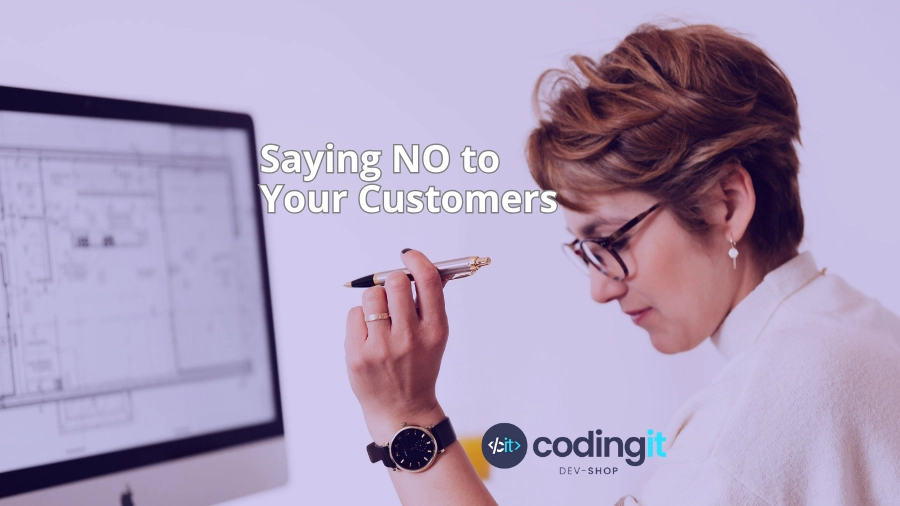There’s a particular kind of pressure that early-stage SaaS companies face. The one that whispers: “Say yes, close the deal, worry about the consequences later.” And when you are in a delicate situation, that voice can be pretty convincing.
When your product is young, your roadmap is still a work in progress, and your MRR graph is flatlining, turning down a feature request feels like self-sabotage. So, you say yes. Again. And again. Until one day, you wake up and realize your product is no longer your product, it’s a Frankenstein’s monster built from scattered client demands and half-implemented exceptions.
During his talk at QCon London 2025, Jon Topper cautioned that delivering unique features or different versions to tenants can overwhelm operations teams if not managed carefully.
That kind of overload usually starts with good intentions and ends with engineering burnout, impossible release cycles, and a product that can’t grow beyond the handful of clients it was overfitted to serve. This is a technical issue, yes, but it’s also a leadership one. And it’s happening to more SaaS founders and product teams than you’d think.
We’re not here to rant about “bad clients” or dunk on custom features. We’re here to ask a much harder question: What does it mean to take care of your customers and your product at the same time? Because sometimes, the best way to build long-term trust… is by saying no.
Blog Summary:
If you’ve ever felt your roadmap drifting, your team stretched thin, or your product harder to scale than it should be, you’re not alone. Today we’ll cover:
- Why saying yes too often leads to long-term costs
- How small exceptions quietly turn into big problems
- The difference between being customer-led and truly customer-centric
- How to filter requests without losing business or trust
- What scalable product thinking actually looks like
- Why the right partner helps you protect your roadmap

Table of Contents:
A Slippery Slope With Hidden Costs
A customer feature request during the early stages of a product can feel like a golden opportunity. It’s framed as a quick tweak, a small exception, or “just one custom field” and saying yes seems like the obvious move. It keeps the client happy, the deal alive, and the roadmap flexible, right?
But every “yes” carries an invisible weight. You’re doing more than building a feature, you’re opening a loop. That feature needs to be maintained, tested, documented, updated, and considered in every future product decision. And if it was built for a single client that loop may never close.
One-off requests compound fast. Before you know it, your team is juggling ten different slightly customized flows, wondering why regression testing takes forever and why nothing ever ships on time anymore. It happens gradually too. You don’t notice the slope until you’re sliding.
What started as flexibility became fragmentation. What felt like responsiveness became technical debt. And what was meant to impress your customers ends up slowing you down for all of them.
What You Break When You Say Yes
Over time, saying yes at every opportunity quietly erodes the foundations of a healthy product. This good intention could result in you breaking consistency. When each client gets a slightly different version of the product, you lose a shared standard. Suddenly, your documentation doesn’t quite apply to everyone. Training materials need footnotes. Feature parity becomes a moving target. And the more “flexible” the product becomes, the harder it is to support because no two customers are having the same experience.
Unfortunately, you’re also breaking predictability. Your product team can no longer ship confidently or plan accurately. Feature releases become a negotiation: which clients use this flow, which ones have overrides, who needs a toggle, and who’s still on an older setup? The idea of “one release for all” fades away, replaced by one-off rollouts and constant context switching. QA becomes a bottleneck. Roadmaps lose their rhythm. And over time, that tension hits your team too.
And maybe most critically, you break product focus. Your vision, the reason you started building this product in the first place, gets pushed to the background. Because now your priorities are shaped by whoever shouted the loudest last week. Instead of building scalable solutions for patterns you see across users, you’re reacting to isolated problems and niche use cases.
The Illusion of Customer-Centricity
It’s easy to believe that saying yes to customer requests is just part of being customer-centric. And to be fair, that’s a common belief. It signals commitment, responsiveness, and adaptability. But not everything that feels customer-centric actually is.
What looks like attentiveness can easily turn into short-term appeasement. And that’s not the same as long-term value. When you bend your product to fit every specific need, you might win a deal today, but you risk delivering an experience that’s inconsistent, fragile, and ultimately disappointing for everyone.
True customer-centricity isn’t about building everything they ask for. It’s about understanding what they’re trying to achieve and guiding them toward solutions that serve those goals at scale. Sometimes that means saying, “Yes, but not like that.” And sometimes it means saying no.
If your team is drowning in exceptions, or your roadmap is driven more by urgency than insight, chances are you’re not being customer-centric, you’re being customer-led. And those are two very different things.
The Scalability Trap
If you think the scalability of your product only refers to its infrastructure or architecture you might want to re-evaluate that. Because scalability is also about building in a way that allows growth without rethinking the product for every new client. And when every “yes” adds a new exception, what you’re scaling isn’t your business, it’s your complexity.
That complexity creeps in fast while releases slow down because now you’re planning around edge cases instead of a product roadmap. And we are not talking about perfection. It’s about focus. SaaS products don’t scale by pleasing everyone, they scale by solving one problem really well and making sure every new customer fits into that solution. If that solution breaks every time a new deal is signed, the problem isn’t the client. It’s the foundation.

Your Product Vision Is Your Filter
Not every feature request is wrong. Some of them are great. Some might even align with where your product needs to go. But the difference between reacting and leading comes down to having, and using a clear product vision. Which is not a nice paragraph you put in a pitch deck.
A product vision is your internal compass. It tells your team, your clients, and yourself what you’re building, who it’s for, and what problems it’s meant to solve. And most importantly, it gives you something to filter decisions through.
Without that filter, everything feels urgent. Every client request carries the same weight. When you have a strong vision, saying no becomes easier. It doesn’t make you inflexible, it positions you as a more focused leader. It lets you differentiate between a smart iteration and a distracting detour, something we also covered when talking about how to determine essential MVP features. It turns the roadmap into a strategy instead of a list of tasks.
You just need one that’s strong enough to say: “Here’s what we’re here to do and here’s what we’re not doing right now.”
How to Say No
The key to saying no without losing the deal is to shift the conversation from “we don’t want to do this” to “this might not be the right move for what we’re building. And here’s why.” We need you to lead with clarity and confidence.
When a customer asks for a feature that doesn’t align, start by understanding what they’re trying to solve. Not just what they’re asking for but why. Often, their request is a symptom, not the root. If you can address the underlying need in a way that fits your product vision, everyone wins.
You can also reframe. Maybe the answer isn’t no, but not right now. Or we’ve heard this from others, if it becomes a broader need, we’ll revisit it. These aren’t stall tactics; they’re strategic positioning. They show the client that you’re listening, but you’re also thinking long-term.
Remember, your clients aren’t buying features, they’re buying your expertise. And part of that expertise is knowing when to say: we could build that but we probably shouldn’t.
Build for Patterns
One of the clearest signals that your product is maturing is when you start identifying patterns. Patterns drive scale. If one client asks for a feature, it’s a data point. If five clients ask for variations of the same thing, that’s a pattern. And that pattern is where product decisions should come from.
Chasing one-off requests might help close deals in the short term, but it creates a fragmented experience. Chasing patterns, on the other hand, gives you leverage. You’re solving a broader problem, making the product stronger for more people, and reinforcing a scalable foundation.
The challenge is resisting the urge to act on everything. Not because the requests aren’t valid -many are- but because your job is to spot the signal through the noise and invest your team’s energy where it’ll have the most long-term impact, not to build everyone’s version of the product.
Educating Clients Is Part of Your Job
When a client requests a feature, it’s usually because they’ve hit a real need. Helping clients understand why you might say no to their request, or propose something different, builds trust. It shows them you’re not just a vendor who does what they’re told, but a partner who’s invested in doing things right.
These conversations don’t have to be difficult. In fact, many clients appreciate when someone takes the time to explain the implications of a request: the technical cost, the impact on other users, and the long-term risks. It signals maturity. And it often opens the door to better solutions than the one they originally had in mind.
Partnering with the Right Team Makes the Difference
The best relationships aren’t built on compliance, they’re built on collaboration. And that only happens when you’re willing to teach, not just deliver.
That mindset applies to your internal team, but it also applies to the partners you bring in to help you build. If your product is evolving, your user base is growing, and the stakes are getting higher, you might need a team that can challenge assumptions, guide decisions, and help you stay focused on the right problems.
CodingIT is known for helping companies make smarter decisions about what to build and what to skip, especially when it comes to custom software development. We bring a product-first mindset to every engagement, so our clients are moving fast and in the right direction. Scaling a SaaS product means building with intention, backed by a team that understands where flexibility helps and where it hurts. If you’re currently navigating those decisions right now, we’d love to talk.
